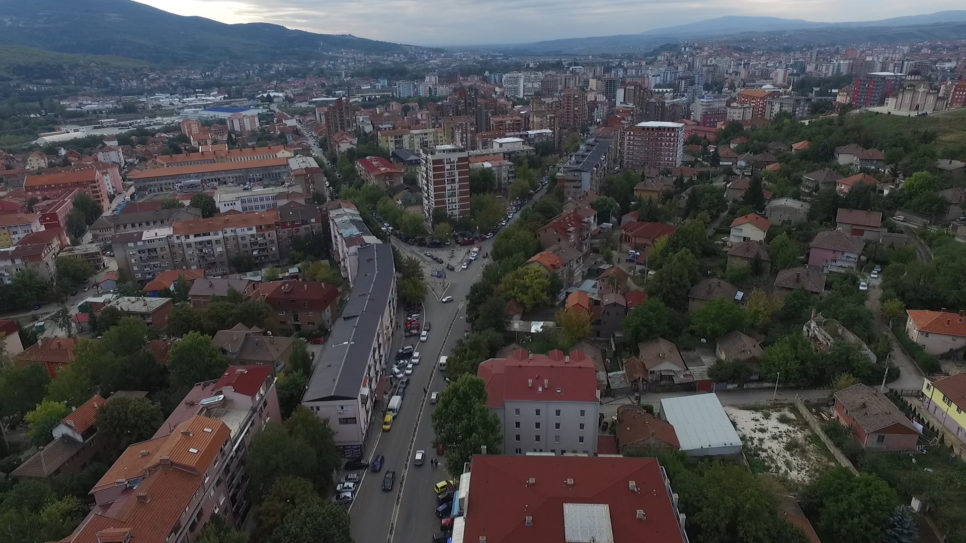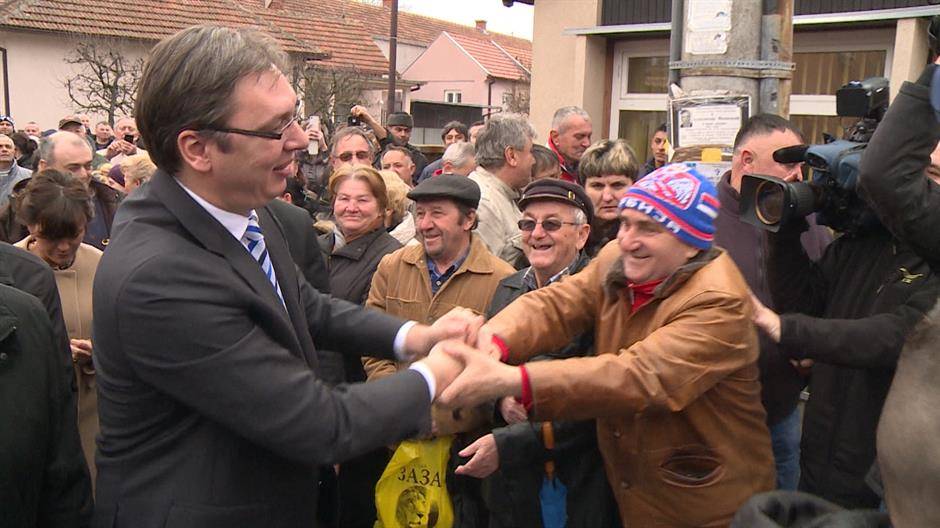On April 18, 2019 released an interesting story explaining how the Regulatory Authority for Electronic Media (REM) enabled the Serbian Broadcasting Corporation (RTS) to earn additional money from advertising. The commercials in question were aired over the usual “quota” for RTS (50% more time for advertising than usual), during live broadcasts of sporting events or television shows. In some cases, the basis for airing additional commercials were the provisions of laws and bylaws, while in others the commercials were aired based on REM’s approval. The journalists also found inconsistencies in REM’s conduct when giving additional commercials the go-ahead.
Relevant Regulations
The topic covered by the journalists is related to certain provisions of the Advertising Act (Official Gazette of RS, No. 6/2016), Electronic Media Act (Official Gazette of RS, No. 83/2014 and 6/2016 – as amended), bylaws passed by the Regulatory Authority for Electronic media based on powers provided in the Electronic Media Act, as well as regarding the implementation of the laws that regulated similar issues in the past.
Limit Imposed by the Advertising Act
The Advertising Act regulates the maximum amount of advertising commercial “media service providers” (previously called “broadcasters”) may air over the course of one full hour, and the maximum amount public media services and media founded by civil society organizations may broadcast. Non-commercial broadcasters are allowed to broadcast half of that amount.
Although the preamble of the Act does not expressly say so, one can confidently assume that RTS and the Vojvodina public service RTV face bigger advertising restrictions for two reasons – so that they may to a greater extent perform their tasks as regards the achievement of public interest, and so that they do not take up an excessively large portion of the advertising market and thus jeopardize the legitimate interests of commercial advertisers. Lawmakers were not ready to prescribe a solution that would be consistent with this purpose – to completely ban public services from airing commercials, as they have other means of financing at their disposal. The reasons for that are apparently not legal or theoretical, but rather purely practical – scrapping the option of charging advertising would mean that additional sources of revenue would have to be found for RTS and RTV, and both potential solutions (raising the subscription fee or budget allocations) were unpopular and their outcome was uncertain.
Article 35 of the Advertising Act stipulates that within one hour of program broadcast by commercial Media Service Providers, TV advertising and TV sales cannot account for more than 20% of the time (that is, no more than 12 minutes), while in the case of public media services the limit is 10% (no more than 6 minutes). The Act also contains a provision stating that “one full hour” is calculated regardless of the time when a program started airing, which is important for TV and radio stations without non-stop broadcasting.
Paragraph 4, which is the most relevant to CINS’ story, envisages that “live broadcasts of international sporting events of national importance, encompassed by the list of most important events of special importance to all citizens, via public media service institutions” may be interrupted by TV advertising and TV sales “for no longer than nine minutes per hour, while the total daily airing of TV advertising and TV sales may last for no more than 10% of the total sports program broadcast per day.”
This provision gave RTS the option of airing more commercials during live broadcasts of certain sporting events, and thus utilizing their commercial potential to a 50% greater extent, provided that the television reduced the number of commercials aired during the rest of the day, when broadcasting programs that are less interesting to the audience and advertisers.
At first glance it is already obvious that this is an exception that can be justified by enabling the public media service to earn additional revenue, i.e. by taking advantage of the commercial potential of live TV broadcasts of popular sporting events, which can lead to saving money from other sources of financing (budget or subscription). On the other hand, not even this exception puts RTS on completely equal footing with commercial broadcasters, given that they, in the event of broadcasting the same sporting events, would have 12 minutes of advertising space per hour at their disposal, whereas RTS would have nine. This yet again confirms the lawmakers’ inconsistency in carrying out their intentions. What those intentions were exactly is hard to say for sure, because the preamble of these rules is not detailed.
What is particularly absurd is that the option of airing more commercials and earning additional revenue is provided for events which the lawmakers themselves labeled as being “of special importance to all citizens.” The importance of an event to citizens should lead to a completely opposite outcome – a ban on interrupting it with commercials!
It is especially important to remember that the possibility of airing a larger quantity of commercials on public media services is legally tied only to international sporting events, not to any other kind of program.
What REM Is Authorized for by the Electronic Media Act
Article 64 of the Electronic Media Act (Access to Most Important Events) prohibits the exclusive broadcasting of events which are “on the list of most important events of special importance to all citizens, in such a way that a significant portion of the public in the Republic of Serbia, a European Union member state or signatory state of an international agreement that is binding for the Republic of Serbia, is denied the possibility of following those events.” Paragraph 2 of the article gives the Regulator (Regulatory Authority for Electronic Media, REM) the authority to put together a list of the most important national and foreign events, “which are of special importance to all citizens.” Only a television with free access and whose coverage zone encompasses the entire area of the Republic of Serbia may have exclusive broadcasting rights for such events.
The same provision obligates REM to make this list in a timely manner, which probably entails its constant updating as necessary, and that the list must be put together “in a clear and transparent way.” What will be considered a transparent way is not specified, but it should go without saying that REM is obligated to publicize this list on its webpage and in the Official Gazette of the Republic of Serbia. That was indeed done, and this LIST OF MOST IMPORTANT EVENTS OF SPECIAL IMPORTANCE TO CITIZENS IN THE REPUBLIC OF SERBIA was published in the Official Gazette of RS, No. 23/2018), as well as on REM’s own webpage. Truth be told, this document was not publicized in machine-readable form, which is contrary to the obligations stipulated by the Electronic Government Act.
Finally, Article 64, paragraph 2 points out that the events on this list may be diverse and lists designations such as cultural, political, sporting, entertainment etc.
Paragraphs 3-6 go into more detail about the rules of when events may be available via delayed broadcast, rules of enabling the takeover of pieces of footage of an event (paragraph 4) and other related questions.
The final, paragraph 7 authorizes the Regulator to prescribe more thoroughly “the method of forming the list of most important events of special importance to all citizens mentioned in paragraph 1 of this article and the exercising of the right of access to events of great interest mentioned in paragraph 1 of this article.” REM used this authority by adopting the Rulebook on criteria for determining the list of most important events of special importance to all citizens and exercising the right of access to events of great interest to the public (Official Gazette of RS, No. 25/2015).
REM Rulebook
This act was also posted on the REM website as a scanned document (draft act), which renders it unsearchable.
A particular (sporting, cultural, political, entertainment and other) event is considered “the most important event” if it meets at least two of the following conditions:
1) that the event and its outcome are of special general importance to the citizens in the Republic of Serbia, rather than just of importance to the citizens who already follow a particular event or other activity the event pertains to;
2) that the event is traditionally broadcast in the Republic of Serbia within a free-access program, as well as that it is regularly watched by a large number of viewers;
3) that it is an important international sporting event involving representatives of the Republic of Serbia;
4) that the event is widely known, i.e. holds general cultural importance for the citizens of the Republic of Serbia, as well as importance for the national cultural identity.
The Regulator envisaged that it would form the list by receiving proposals from certain ministries, “competent for the areas for which the list of most important events is formed.” Based on those lists, the Regulator puts together a draft list of the most important events, which it publicizes on its webpage. All interested parties have 15 days as of the date of the draft list’s publication to file objections to the list. After that, the Regulator defines the final list and posts it on its website. REM has taken on the obligation of reviewing the list for potential amendments and supplements at least once every three years.
The method of determining whether certain criteria are met is not prescribed, except based on the claims by the ministries and interested citizens themselves. So it remains unclear how the assessment will be made whether an event is “of special general importance” to Serbian citizens, rather than just to those who follow it; when an event will be considered to be “watched by a large number of viewers” and by what means ratings will be determined; when an international event will be considered important; when an event will be considered “widely known, , i.e. holds general cultural importance for the citizens of the Republic of Serbia, as well as importance for the national cultural identity” (e.g. will it be enough for an event to hold such importance for the majority of Serbian citizens or literally for all citizens, and how will that be determined).
It is interesting that REM did not foresee the possibility of its members or expert service affecting the content of the list by proposing that an event be added even though a competent ministry had failed to do so.
REM List
The list of most important events of special importance to citizens in the Republic of Serbia predominantly consists of sporting events:
1. Summer and winter Olympic and Paralympic Games, European and world championships for persons with special needs, Special Olympics
2. Semifinal and final matches of the World and European soccer championships (senior categories), matches at those championships involving the Serbian national team and qualifiers for those championships involving the Serbian national team
3. UEFA Champions League and Europa League matches involving a Serbian club, except qualifiers for those competitions
4. Semifinal and final matches of the world and European basketball championships (senior categories) and matches at those championships involving the Serbian national team
5. Semifinal and final matches of the world and European handball championships and matches at those championships involving the Serbian national team
6. Semifinal and final matches of the world and European volleyball championships and matches at those championships involving the Serbian national team
7. Semifinal and final matches of the Volleyball World League, if they involve the Serbian national team
8. Semifinal and final matches of the world and European water polo championships and matches at those championships involving the Serbian national team
9. Water Polo World League Super Final, if it involves the Serbian national team
10. Semifinal and final matches of the Davis Cup and Fed Cup, if they involve the Serbian national team
11. World and European athletics championships, if particular disciplines involve Serbian athletes
Besides them, the only other two events on the list are music festivals:
12. EXIT Music Festival
13. Guča Music Festival.
The list above (Official Gazette of RS, No. 45/2016) used to be much longer, even where sporting events were concerned, not to mention cultural ones. Thus, in the opinion of REM or the competent ministries, the following events stopped being “most important events of special importance to the citizens of Serbia”:
1. Yugoslav Theater Festival – WITHOUT TRANSLATION, Užice;
2. STERIJINO POZORJE theater festival, Novi Sad;
3. JOAKIM INTERFEST theater festival, Kragujevac;
4. BITEF theater festival, Belgrade;
5. BEMUS music festival, Belgrade;
6. International Documentary and Short Film Festival, Belgrade;
7. OCTOBER SALON art festival, Belgrade;
8. European Film Festival PALIĆ, Palić;
9. SUBOTICA International Children’s Theater Festival, Subotica;
10. International Jeunesses Musicales Competition, Belgrade;
11. MOKRANJAC DAYS music festival, Negotin;
12. VUKOV SABOR festival, Tršić;
13. BELGRADE DANCE FESTIVAL, Belgrade;
14. GUITAR ART FESTIVAL, Belgrade;
15. NOMUS music festival, Novi Sad;
16. NISHVILLE jazz festival, Niš;
17. FEST film festival, Belgrade;
18. CINEMA CITY international film festival, Novi Sad;
19. GOLDEN SNAIL International Children’s Animated Film Festival, Vranje;
20. KUSTENDORF International Film and Music Festival, Mokra Gora;
21. Acting Achievements Festival, Niš;
22. Screenplay Festival, Vrnjačka Banja;
23. Belgrade International Book Fair, Belgrade;
24. Opening of new permanent exhibition of the National Museum in Belgrade;
25. International Archaeology Film Festival;
26. International Festival of Ethnological Film;
27. International Nitrate Film Festival;
28. Cities in Focus program;
29. Venice Biennale of Architecture.
This shrinking of the list, so that among cultural events only those with extremely commercial characteristics remain, additionally confirms that the term “event of national importance” actually means “event of commercial importance.”
Implementation of Regulations
CINS’ research story showed that RTS had addressed REM for permission to air 9 minutes of commercials within a full hour during popular Serbian TV shows. In some cases, REM, i.e. previously the RRA broadcasting agency, gave that permission, while in other cases it didn’t. What all these decisions have in common is the fact that they lack legal grounds, and in many cases justification as well.
This is one of the typical examples of a decision the REM Council made at one of its sessions:
“10. Review of a request by the RTS Public Media Institution to allow commercial breaks lasting nine minutes in the hour during the airing of the TV show Vojna akademija (Military Academy) and making of a decision; After a discussion, the Council deputy chairperson proposed and the Council members unanimously made the following
D E C I S I O N
The request by the RTS Public Media Institution to allow commercial breaks lasting nine minutes in the hour during the airing of the TV show Vojna akademija is adopted.”
This decision was publicized as part of REM Council session minutes.
Since no regulation of the Republic of Serbia provides the possibility of the public media service airing longer commercial breaks as approved by REM, that means the practice of granting such permissions and airing commercials based on permission is wholly illegal.
On the other hand, as regards the implementation of the rule on longer commercial breaks during sporting events and two music festivals, no decision by REM was necessary in the first place.
Main Conclusions
Regulations of the Republic of Serbia regarding reasons for which an event is considered to be of national importance and airing longer commercial breaks during live broadcasts of said events are deeply illogical.
Allowing a public media service to earn additional revenue through commercials during its highly commercial content is only partially regulated, where sporting events and two music festivals are concerned.
On the other hand, additional use of the commercial potential of TV shows has been going on for years through the illegal practice of the Regulatory Authority for Electronic Media (previously RRA) granting permission, without being authorized to do so.
Existing provisions of the Advertising Act and the Electronic Media Act need to be reviewed, so as to formulate a consistent solution as regards the identification of key events, as well as the right of advertising on a public media service. Rules for defining the list of events also need to be specified, especially regarding the assessment of compliance with criteria and the Regulator’s method of decision-making.
The story was produced within the project supported by the ‘Freedom of Expression and Public Informing’ Programme of the Open Society Foundation Serbia.
From November 2018 to September 2019 the work of CINS is supported by Sweden, within the Belgrade Open School program “Civil Society as a Force for a Change in the Serbia’s EU Accession Process.”






What do you think